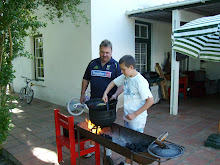Brainstorming is a proven creativity tool. But it's easy to miss great ideas when one person dominates the session, or when people are too afraid to voice their most creative thoughts for fear of being judged. We must allow everyone to contribute.
Imagine that we've gathered our educators together for a much-needed brainstorming session, focusing on the most effective way to manage the school. Bill, the most talkative and forceful member of our staff, immediately asserts that police and parent involvement are the best platforms to use. Staff would follow on to contribute ideas that go along with Bill's. Ten minutes later, the staff would be immersed in police and parent ideas. No one else would’ve submitted any other options, once Bill had set the direction.
It's all too easy to start a brainstorming session with good intentions, but then to overlook or miss potentially great ideas, simply because one assertive person sets the tone for the entire meeting. This is why at meetings I encourage around the table discussions or round-robin. I feel this method allows staff members to generate ideas without being influenced by any one person. We can then take these ideas into the next stage of the problem-solving process.
A possible idea at our next strategic meeting would be to have the staff around a table. Each person will receive some index cards, so that they can record their ideas on individual pieces of card in silence. Once everyone has written down an idea, each person will pass their idea to the person next to them. Everyone should now be holding a new card with their neighbour’s idea written down on it. Each person will now use their neighbour’s idea as inspiration to create another idea, which they will then write on a fresh index card. And continue to hand it to their neighbour.
Advantages and Disadvantages is that our staff will use each other’s ideas to generate even more ideas, without being influenced by assertive or vocal members of the staff. Another advantage of this approach is that it also ensures that everyone in your room gets an equal chance to present their ideas including shy staff members. A disadvantage is that it won't be anonymous. When staff pass ideas around the room, they might hold back simply because they know that the person next to them will see what they have written. Another disadvantage is that each person gets inspiration for their new idea from the ideas of only one other person, rather than from the entire group. We could solve this by gathering the ideas at each stage, shuffling them, and then passing them out again; rather than having staff pass their ideas to the person next to them.
Let’s give this a go at the next strategic meeting.
Tuesday, November 30, 2010
Subscribe to:
Post Comments (Atom)

No comments:
Post a Comment